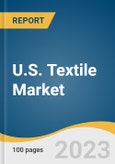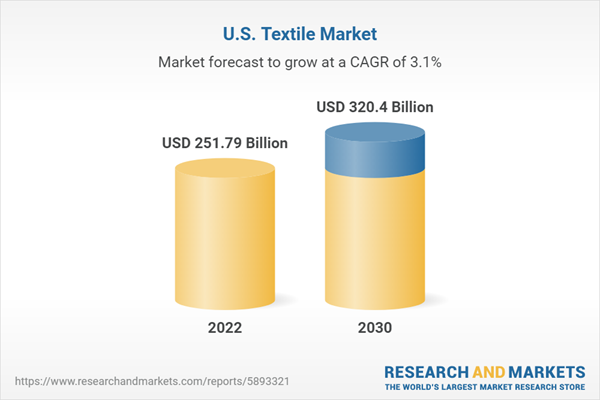Increasing awareness among the market players regarding the importance of worker safety and security, coupled with stringent regulations and high costs associated with workplace hazards, is anticipated to drive market growth. With the growing GDP and increasing employment in industries, workers’ safety has become paramount. Companies emphasize worker safety and have established safety guidelines to reduce workplace hazards that adversely impact operational costs.
The number of workplace fatalities in the U.S. was estimated at 1, 008 for the construction industry in 2020. The leading causes for these fatalities in the construction industry were falls, electrocution, being struck by an object, and being caught in/between. Lack of adequate protective equipment and clothing was cited as one of the leading causes of fatality in the aforementioned associated accidents.
The value chain of the U.S. textile industry comprises raw material suppliers, product manufacturers, distributors, marketers or sellers, and application industries. Raw materials offered by suppliers to manufacture textile products include cotton, chemicals, wool, silk, synthetic fibers, machinery, and others. BASF; Dow Inc.; SABIC; Exxon Mobil Corporation; and DSM are the major raw material suppliers in the textile market.
The availability of raw materials at cheap prices for textile producers is anticipated to be significantly influenced by the dropping crude oil prices as a result of rising crude oil inventory levels. However, it is anticipated that the supply of feedstock for textile manufacturers will be constrained by the rising demand for engineering polymer products as lightweight materials in rigid applications in the automotive, construction, and electronics sectors.
U.S. Textile Market Report Highlights
- Based on raw material, the chemical segment dominated the market with the largest revenue share of 44.3% in 2022. This is due to the growing application of chemicals in natural as well as synthetic fibers, as dyeing and finishing agents to improve their appearance
- The nylon product segment is expected to grow at the highest CAGR of 3.5% over the forecast period. Nylon is increasingly used for manufacturing sportswear as it is durable, lightweight, stretchable, and inexpensive. Moreover, due to its characteristics, nylon is also largely used in automobile components to replace metals to reduce vehicle weight and improve fuel efficiency
- The technical application segment is projected to grow at the fastest CAGR of 3.9% over the forecast period. Technical textiles find significant applications in the aerospace industry, ranging from being used as G-suits for aerospace operations to space suits for space exploration. Increasing challenges in the aerospace industry and the adoption of advanced technology have given rise to the need for technical textiles that cater to specific requirements
- The construction application of technical textiles is forecasted to grow at the fastest CAGR of 4.1% over the forecast period. The various products used in this segment include tarpaulins, textile structures, architectural membranes, awnings & canopies, scaffold nets, concrete reinforcement, house wraps, roofing scrim, and hoardings
- The market is highly fragmented in light of the high visibility of product forms in fashion, industrial, and household application segments. The establishment of strategic partnerships with buyers for the development of tailored forms of products is expected to remain a key critical success factor for textile manufacturers
Table of Contents
Companies Mentioned
- INVISTA S.R.L.
- IBENA Inc.
- Belton Industries, Inc.
- Dewitt
- TenCate
- Mogul Co., Ltd.
- Siang May Pte Ltd.
- terrafix Geosynthetics
- HUESKER International
- Morenot
Table Information
| Report Attribute | Details |
|---|---|
| No. of Pages | 100 |
| Published | September 2023 |
| Forecast Period | 2022 - 2030 |
| Estimated Market Value ( USD | $ 251.79 Billion |
| Forecasted Market Value ( USD | $ 320.4 Billion |
| Compound Annual Growth Rate | 3.1% |
| Regions Covered | United States |
| No. of Companies Mentioned | 10 |









